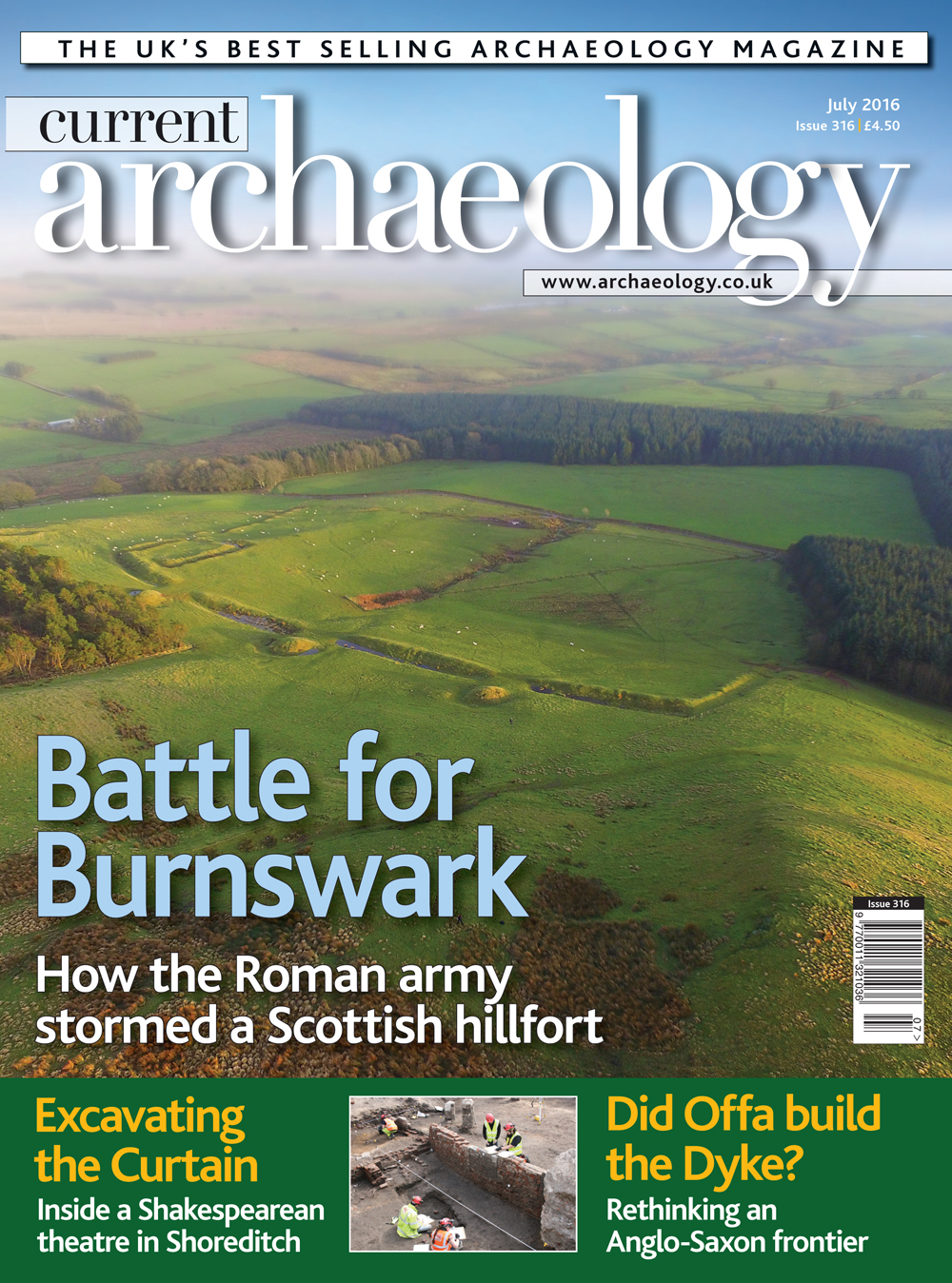The true nature of the events that played out at Burnswark in the2nd century AD has long excited speculation. Two Roman campswere aggressively positioned to hold a former native hillfort ina vice-like grip, but does this dramatic arrangement testify toa desperate siege, or a rigorous military training regime? Nowan ingenious new approach to studying the site has given us apowerful glimpse of what really happened on that Scottish hilltop,almost two millennia ago.
Offa’s Dyke presents another earthwork, albeit a rather longer one, with an uncertain pedigree. Was this barrier really the handiwork of the famous Mercian ruler, and if so what was it intended to achieve? Previous studies have cast the Dyke as an overblown boundary marker for a consensual border, but could there be another explanation? We weigh the evidence.
Marden’s mysterious earthwork takes the form of the largest ‘superhenge’ known in Britain. Investigation of the site has revealed a Neolithic sauna, the diminutive vestiges of a once monumental mound, and an intriguing connection with water. What can this tell us about the rituals performed within?
We know more about the performances in the Curtain theatre, which was long thought to be the inspiration for the famous allusion to a ‘wooden O’ in Henry V. Ongoing excavations have, however, revealed what seems to be a distinctly rectilinear playhouse. We take a look inside a building that helped usher in a new age of theatre.
Matt Symonds
IN THIS ISSUE:/n
FEATURES/n
OFFA’S DYKE/n
A call to action
Since it was first mentioned in a 9th-century Life of King Alfred, the great ditchseparating Mercia and Britain has been consistently attributed to King Offa (d. 796).But does archaeology support this attribution? This is just one of the questions stillto be answered about the Welsh equivalent of Hadrian’s Wall.
BULLETS, BALLISTAS, AND BURNSWARK/n
A Roman assault on a hillfort in Scotland
Two Roman camps lie on either side of the Iron Age hillfort at Burnswark, wherean extraordinary number of Roman projectiles have been found. Is this evidence ofa Roman training facility or a fierce assault on Burnswark Hill?
VALLEY OF THE HENGES/n
Exploring Neolithic landscapes in the Pewsey Vale
Britain’s largest ‘superhenge’, Marden henge, is also its least understood. What hasongoing fieldwork here and at the neighbouring Wilsford henge revealed about oneof the richest Neolithic landscapes in Europe?
CURTAIN CALL/n
Inside an Elizabethan playhouse
The Curtain is one of the most mysterious of London’s 16th-century theatres. Extensiveexcavations indicate it was rectangular rather polygonal, but how did this structure comeinto being? And what can the finds tell us about the development of Elizabethan drama?
NEWS/n
Conserving Richmond Castle’s conscientious objector graffiti;London’s post-Boudican fort revealed; William Wallace’s kirk found?;More Saxon graves on Salisbury Plain; Llanwnda’s ‘Iron Age’ earthworksare medieval; Reshaping the Star Carr headdresses; England’ssmallest medieval chess piece; Seal matrix’s owner identified
REGULARS/n
Context
The Neolithic village on Mainland,Orkney
Conference
Hadrian’s Wall: 40 Years of FrontierResearch is approaching fast. Thisspecial section contains the latestdetails on our specialist speakers,timings, and how to book
Reviews
Death and Burial in Iron Age Britain;The Thames Iron Works 1837-1912:A Major Shipbuilder on the Thames;50 Finds from Lincolnshire: Objectsfrom the Portable Antiquities Scheme
Sherds
Chris Catling’s irreverent take onheritage issues
Odd Socs
The Devon Buildings Group

